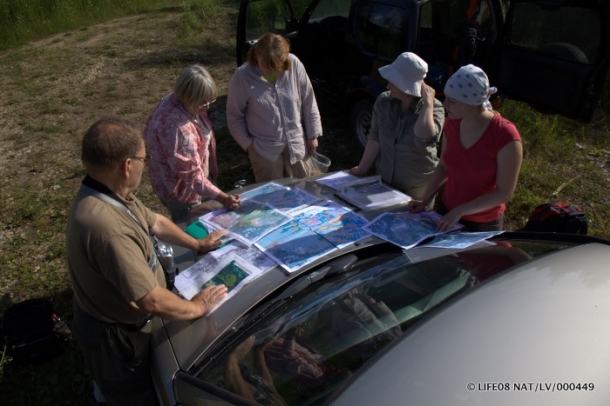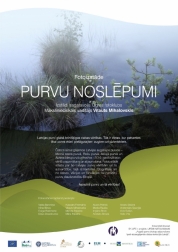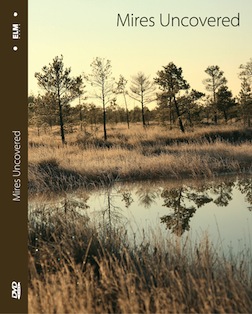Field studies completed in the LIFE project sites 15/09/2010 01:00
Management plans are elaborated for 4 nature reserves – Aizkraukle Mire and Forests, Aklais Mire, Melnais Lake and Rožu Mires. Field studies were carried out by experts from various fields.
The first experts who started the field work in early spring were the two ornithologists - Edmunds Račinskis and Aivars Petriņš. Results are encouraging - all the sites appeared to be of a great ornithological interest. Although some data was partly known from previous investigations, the most interesting information about bird species was found in Aizkraukle Mire and Forests Nature Reserve.
The two habitat experts Rūta Sniedze and Uvis Suško have concluded that most valuable from the botanical point of view is Aizkraukle Mire and Forests and in Aklais Mire Nature Reserves where the highest plant species diversity was determined. In Aizkraukle Mire several studies were carried out already before the project started but in Aklais Mire the experts have found a number new rare plant and bryophyte species. In total, 13 bryophyte and 12 plant endangered species occur in Aklais Mire, about 80% of the territory are covered by habitats of European interest.
The mollusc expert Digna Pilāte has confirmed that LATĪNISKI RESNAIS PUMPURGLIEMEZIS is still found in Aizkraukle Mire and Forests Nature Reserve. In all the project sites invertebrate studies were carried out by Voldemārs Spuņģis, various methods were applied. The results provide an insight into invertebrate species composition in mire and forest habitats.
Amphibian and reptile expert Andris Čeirāns has observed a lot of frogs in the project sites but previous reports about the presence of LATĪNISKI LIELAIS TRITONS unfortunately was not confirmed.
Lake studies in the project sites were carried out by Vita Līcīte. The results have confirmed the presence of habitat of European importance – dystrophic lakes.
The nature management plans are a part of EC LIFE+ project “Restoration of Raised Bog Habitats in the Especially Protected Nature Areas of Latvia”. Therfore, special attention was paid to mire hydrology (expert Aija Dēliņa). Geological studies were performed by Laimdota Kalniņa. It was clearly observed that mire drainage is strongly affecting the mire ecosystems and there is a clear need for the restoration of site hydrology and habitats. Peat samples were taken to study the raised bog origin and development.
Field studies in the project sites are completed and the results summarized in the expert reports.












